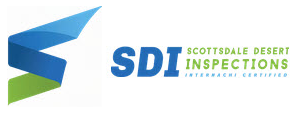The inspection consists of:
- a non-invasive, visual examination of the readily accessible, visible, and installed systems and components of the building, as outlined in the IAC2 Mold Inspection Standards of Practice;
- moisture, temperature and humidity measurements;
- at least three air samples (one indoor and two outdoor); and
- possibly one surface sampling at an area of concern.
- moisture intrusion;
- water damage;
- musty odors;
- apparent mold growth;
- conditions conducive to mold growth;
- the results of a laboratory analysis of all mold samplings taken at the building; and
- any system or components listed in the Standards of Practice that were not visually examined, and
- the reasons they were not inspected.
Here are some considerations specific to dealing with interior mold issues in Glendale:
-
Humidity Control: Although Glendale has a desert climate with low humidity, indoor humidity levels can still rise, especially during monsoon season or due to water leaks. Ensure proper ventilation and consider using dehumidifiers in areas prone to moisture buildup, such as bathrooms, kitchens, and basements.
-
Inspection for Leaks: Regularly inspect your home for leaks from plumbing fixtures, roofs, windows, and doors. Even minor leaks can lead to moisture buildup and mold growth, so prompt repairs are essential.
-
Proper Ventilation: Ensure that bathrooms, kitchens, and laundry rooms are adequately ventilated to prevent moisture accumulation. Use exhaust fans during and after activities that generate moisture, such as cooking or showering.
-
Address Condensation: In areas with air conditioning, condensation can occur on windows and walls, especially during hot and humid weather. Wipe down surfaces to remove excess moisture and consider using moisture-absorbing products.
-
Monitor Indoor Humidity: Use a hygrometer to monitor indoor humidity levels and aim to keep them below 60% to discourage mold growth.
-
Regular Cleaning: Regularly clean and maintain your home to prevent the buildup of dust, dirt, and organic matter that can contribute to mold growth. Pay special attention to areas with poor ventilation or high moisture levels.
-
Prompt Remediation: If you notice any signs of mold growth, such as musty odors, discoloration on walls or ceilings, or visible mold growth, address the issue promptly. Clean and disinfect affected surfaces, and address the underlying cause of moisture to prevent recurrence.
-
Professional Assistance: For severe or widespread mold problems, or if you're unsure how to address the issue effectively, consider seeking assistance from a professional mold remediation company. They can assess the extent of the problem and provide appropriate solutions.
By implementing these strategies and remaining vigilant for signs of mold growth, you can help prevent and address interior mold problems in the Glendale, AZ area.


